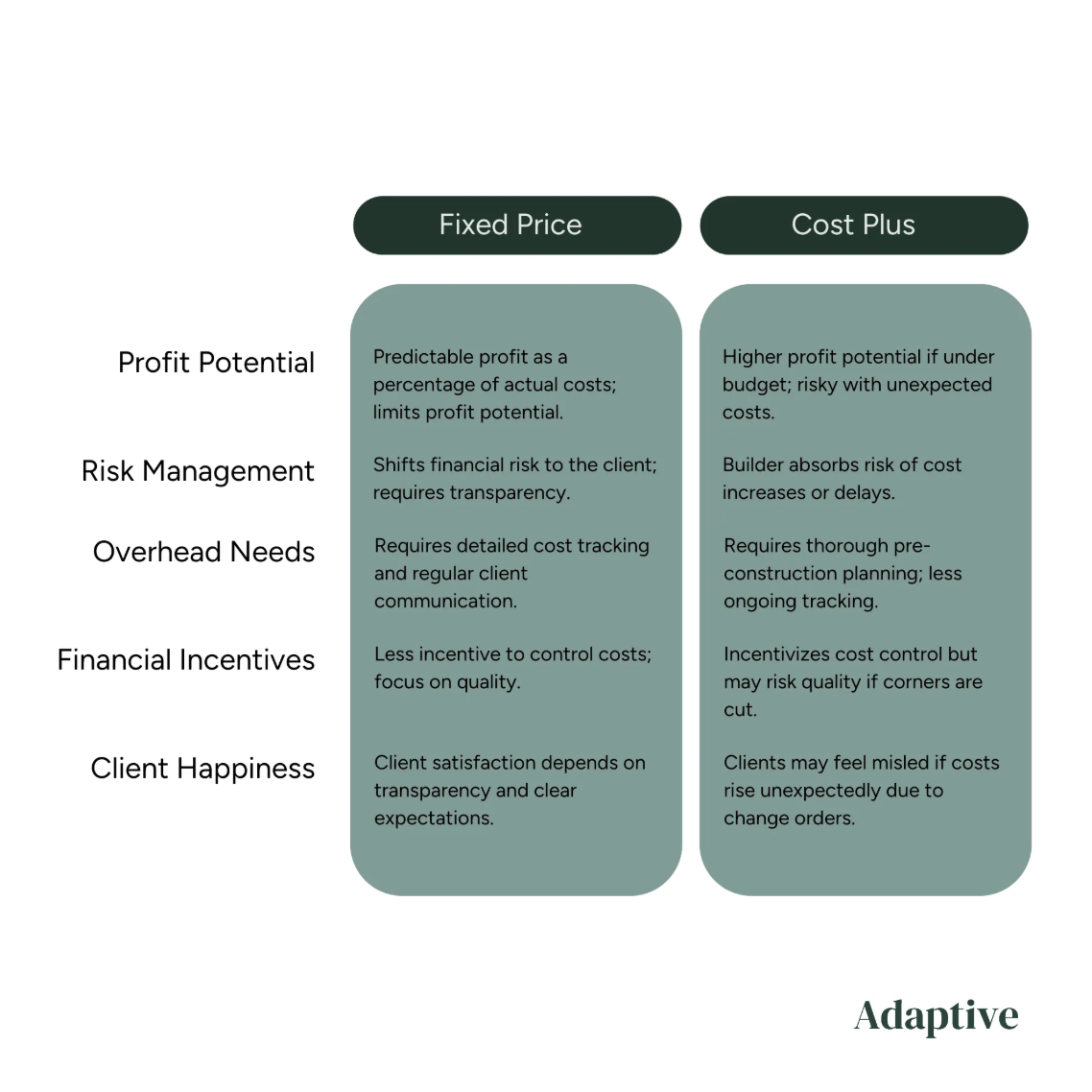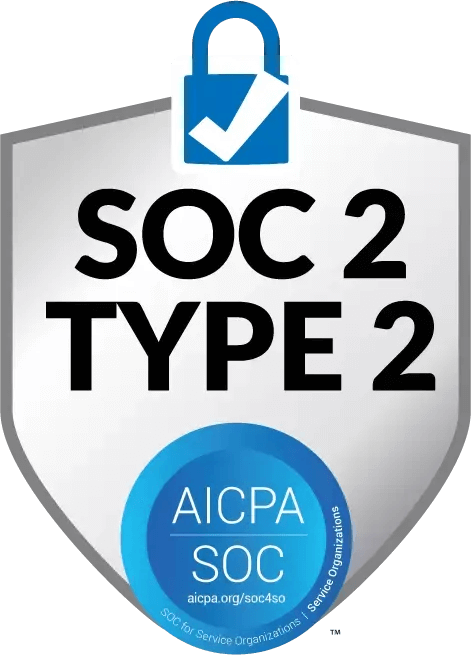Cost Plus vs. Fixed Price Contracts: Breaking Down the Key Factors for Success in Construction Projects
In this episode of the Builders Budgets and Beers podcast we discuss the pros and cons of Fixed Price vs. Cost Plus building models in the construction industry. Builders Brad Robinson, President of Bradford Custom Homes & Remodeling, and Scott Bland, Owner of Jim Bland Construction, debate the merits of each approach, considering factors like risk, profit potential, overhead, client satisfaction, and quality control.
Contents
Introduction
Ladies and gentlemen, welcome to the great debate: Cost Plus vs. Fixed Price. In one corner, we have Scott Bland of Team Cost Plus, Owner of Jim Bland Construction, championing transparency and a plan for every twist and turn. In the other, Brad Robinson of Team Fixed Price, President of Bradford Custom Homes & Remodeling, bringing predictability and controlled costs to the ring. In our latest podcast episode of Builders, Budgets, and Beers, these two industry pros squared off, debating the strengths of their chosen contract types. This blog breaks down their conversation into four key rounds—Profit Potential, Risk, Overhead Requirements, and Financial Incentives—with a bonus round on Client Happiness. Get ready for some insightful takeaways!
Round 1: Profit Potential
- Fixed Price Contracts: Typically offer higher profit potential for builders because they take on more risk. If the project is completed under budget, the builder retains the difference as profit. However, this also means that unexpected costs can erode profits quickly.
- Cost Plus Contracts: Profit is usually more predictable as the builder charges a percentage of the actual costs. While this model reduces the risk of losses, it can also limit profit potential, especially if the project is well-managed and comes in under budget.
Episode Highlight from Our Guests 💡
Brad highlighted how fixed price contracts can lead to higher profits if managed correctly, but he also warned about the importance of strict cycle time management to avoid eroding these profits.
Strict cycle time management refers to carefully controlling the timeline of a construction project to ensure that each phase is completed within the scheduled time frame. In the context of fixed price contracts, this is crucial because delays can lead to increased costs, which the builder would have to absorb, thereby reducing profit margins. By managing the cycle time effectively the builder can minimize unexpected expenses and protect their profit potential.
Round 1: Profit Potential
- Fixed Price Contracts: Place more risk on the builder, particularly in volatile markets or when unforeseen issues arise. For example, a sudden increase in material costs or extended project timelines can lead to significant financial losses for the builder.
- Cost Plus Contracts: Shift more of the financial risk to the client, as they are responsible for covering the actual costs plus the builder’s markup. This model can protect the builder from market fluctuations but requires transparency and trust with the client.
Episode Highlight from Our Guests 💡
Scott mentioned how the unpredictability of material costs during the COVID-19 pandemic made Cost Plus contracts a safer choice, as it allowed him to pass on those costs to clients rather than absorbing all the unforeseen costs.
To be successful and profitable with fixed price contracts, the builder needs to be able to accurately estimate all project costs upfront. This requires a deep understanding of material prices, labor costs, and other potential risks. However, during unprecedented events like the COVID-19 pandemic, where material costs fluctuated wildly and supply chains were disrupted, even the most experienced builders found it nearly impossible to predict costs accurately. In such volatile conditions, fixed price contracts become highly risky, as unexpected increases in costs can quickly erode profits and lead to significant financial losses.
Round 3: Overhead Requirements
- Cost Plus Contracts: Require detailed cost tracking and regular communication with the client to justify expenses. This includes maintaining meticulous records of labor, materials, and other costs, which can increase administrative overhead.
- Fixed Price Contracts: While they don’t require as much ongoing cost tracking, they demand a more thorough pre-construction process (pre-con). Builders need to accurately estimate costs, plan for potential changes, and manage allowances carefully. Change orders can also add significant overhead, as they require additional work to manage and communicate with the client.
Episode Highlight from Our Guests 💡
Both Brad and Scott emphasized the importance of a thorough pre-construction process. Brad’s team uses a robust pre-con to ensure they capture every detail, reducing the risk of unexpected costs later on.
The pre-construction process differs between fixed price and cost plus builders mainly in focus and execution. For fixed price builders, pre-con requires meticulous cost estimation, planning for contingencies, and detailed upfront planning to avoid unexpected expenses that could reduce profits. In contrast, cost plus builders concentrate on setting up transparent cost tracking systems and clear communication with the client, as actual costs will be passed along with a markup. Each approach tailors pre-con to align with the specific risks and requirements of the contract type.
Round 4: Financial Incentives
- Fixed Price Contracts: Builders are incentivized to control costs to maximize their profit margin. However, this can sometimes lead to a focus on cost-saving at the expense of quality, as builders might be tempted to cut corners to protect their profits.
- Cost Plus Contracts: Builders have less incentive to control costs since they are reimbursed for all expenses. This can lead to higher costs for the client, but it also allows the builder to focus on quality without worrying about squeezing the budget.
Episode Highlight from Our Guests 💡
Scott pointed out that while Cost Plus contracts might seem to give builders a free hand, a well-structured pre-con process can help manage client expectations and ensure that the project stays within a reasonable budget.
Meanwhile, Brad pointed out that responsible fixed price builders focus on delivering consistent quality across projects of different price ranges. They ensure foundational work is never compromised and collaborate with clients on choosing finishes and hardware to meet quality expectations. This commitment to quality is especially vital for small builders, where maintaining a strong reputation and securing positive client feedback are key to success.
Bonus Round 5: Client Happiness
- Fixed Price Contracts: Can lead to client dissatisfaction if expectations aren’t properly managed, especially if a builder adds a lot of change orders that significantly increase the project’s final cost. Clients who believe they are paying a “fixed” price may feel misled if costs rise unexpectedly.
- Cost Plus Contracts: Can also lead to unhappy clients if there isn’t transparency or if the final cost far exceeds the initial rough estimate. Setting clear expectations about potential costs and being transparent throughout the project is crucial to maintaining client trust and happiness.
Episode Highlight from Our Guests 💡
Both Scott and Brad agreed that regardless of the contract type, client happiness hinges on setting the right expectations from the start. Scott, who primarily uses Cost Plus contracts, stressed the importance of a thorough pre-con process to help clients understand what to expect and to avoid surprises down the line.
Setting clear expectations from the outset is crucial for ensuring client satisfaction throughout the entire project, whether the contract is Fixed Price or Cost Plus. Establishing trust and minimizing misunderstandings early on helps maintain a positive client relationship from start to finish.
Summarized Results
The table below is a quick comparison of Cost Plus and Fixed Price contracts across the key factors discussed in this blog, highlighting the strengths and challenges of each approach.

Final Thoughts
Whether you choose a Cost Plus or Fixed Price contract, success ultimately comes down to clear communication, careful planning, and setting the right expectations with your clients. Both models have their advantages and challenges, but with the right approach, you can ensure a successful project and satisfied clients. Listen to our full podcast episode for more insights and expert advice on navigating these contract types.
Both contract types are seamlessly supported in Adaptive. Whether you're managing fixed price (internal and client-facing) or cost plus budgets, you can easily track and create invoices with just a few clicks. Ready to streamline your project finances? Book your demo today to see Adaptive in action!








